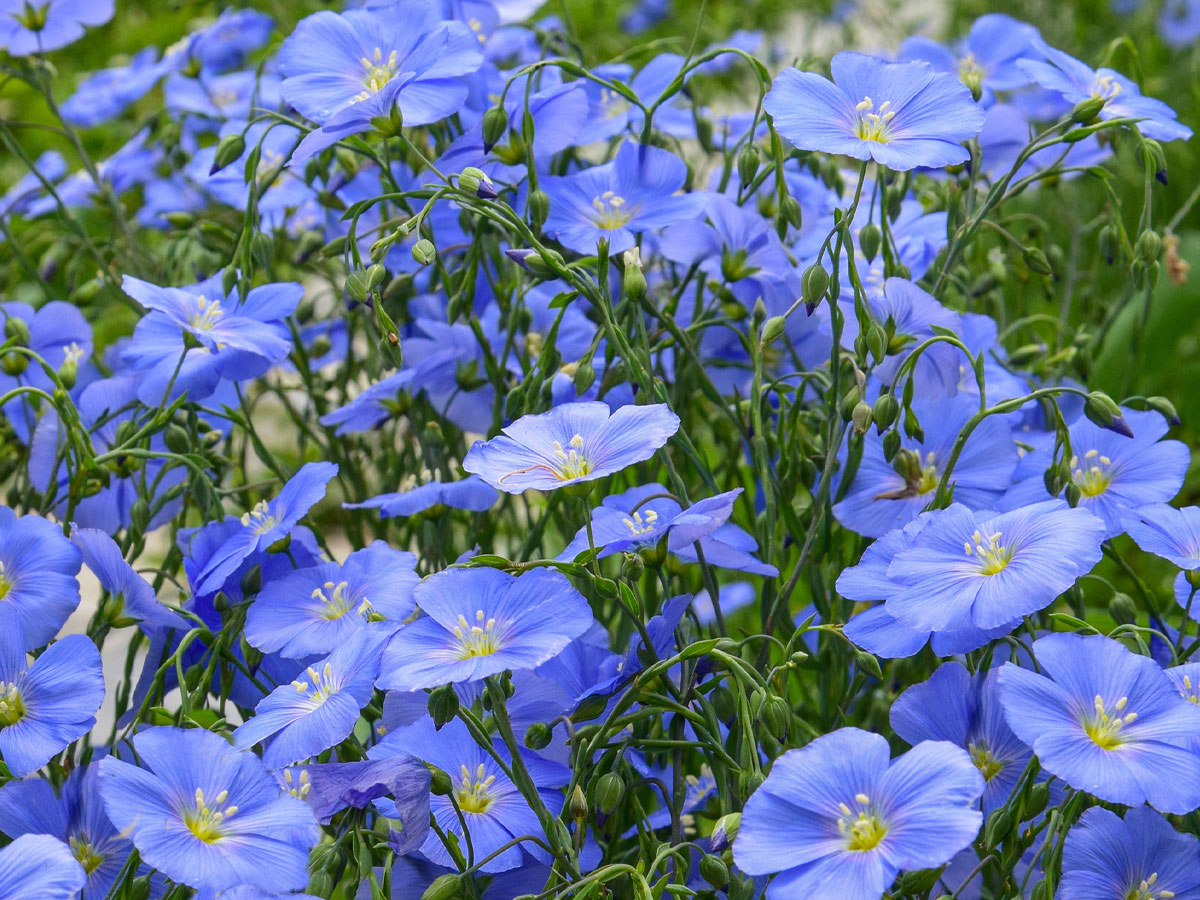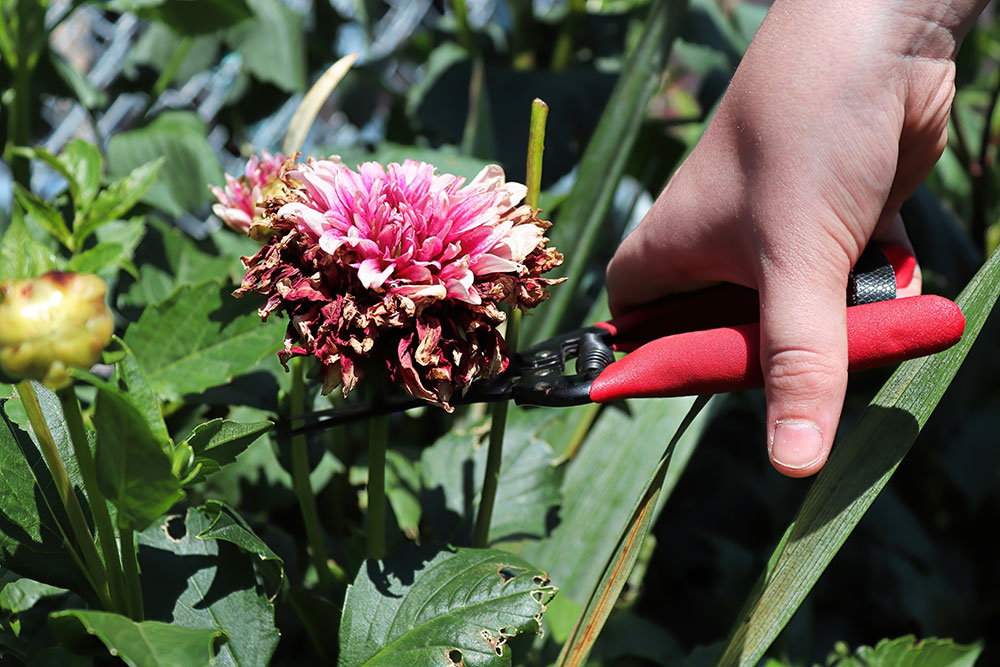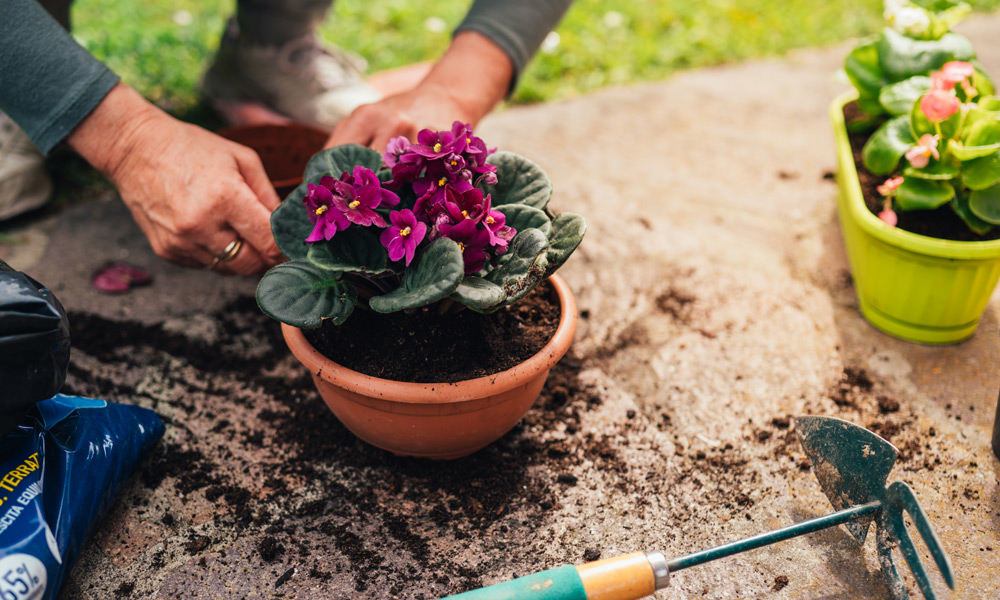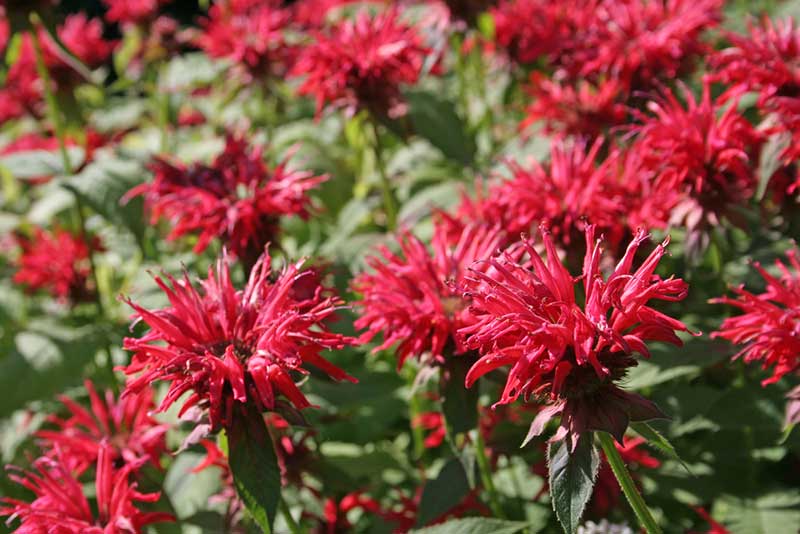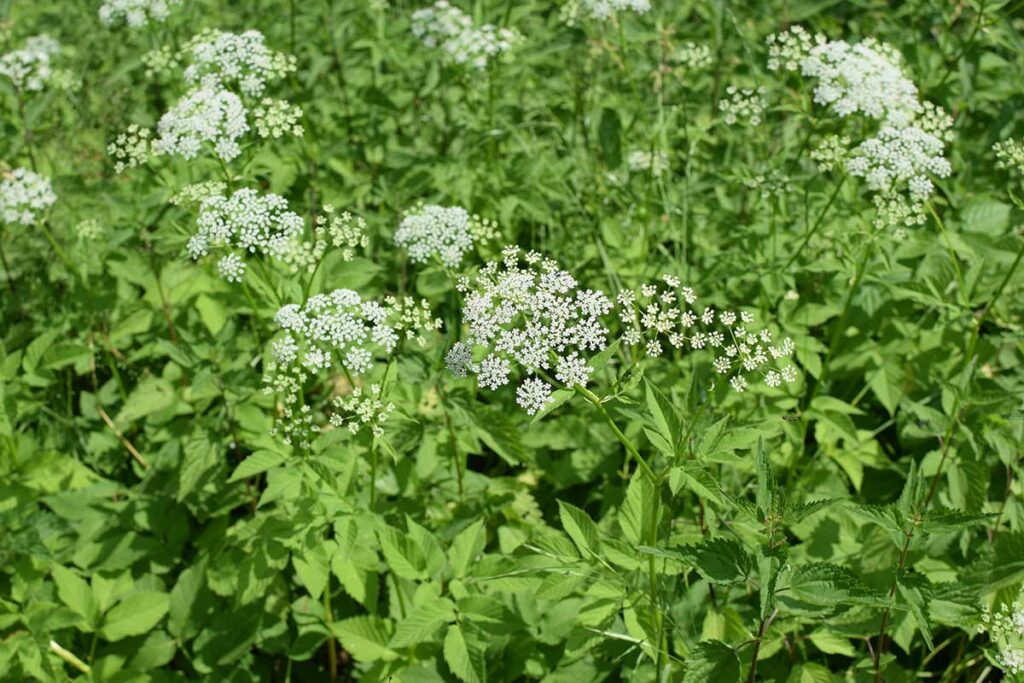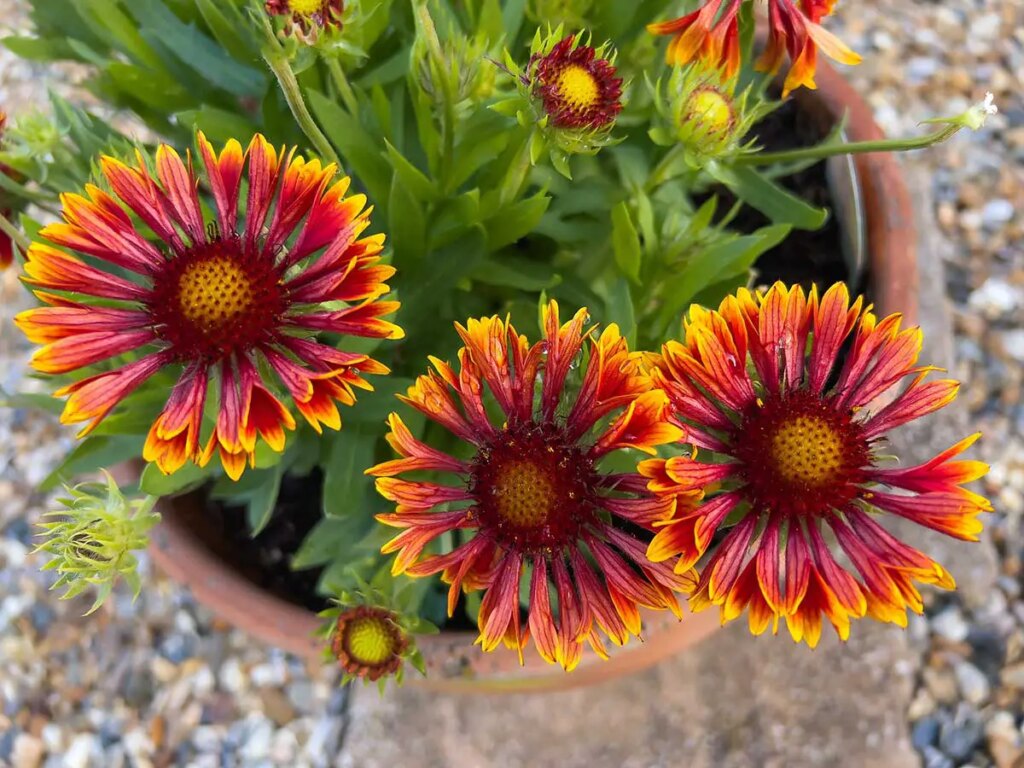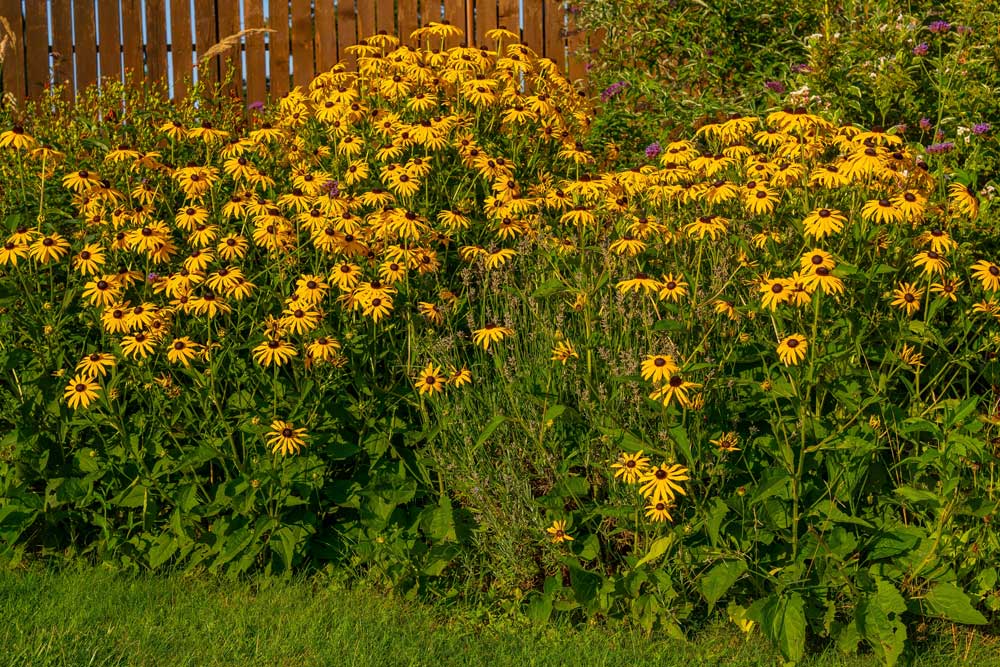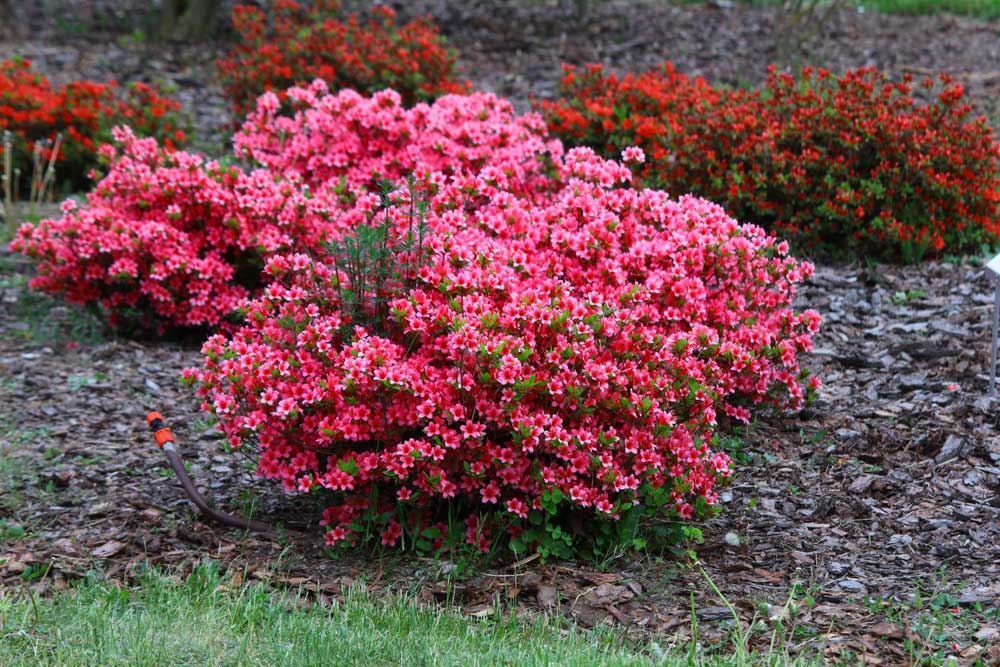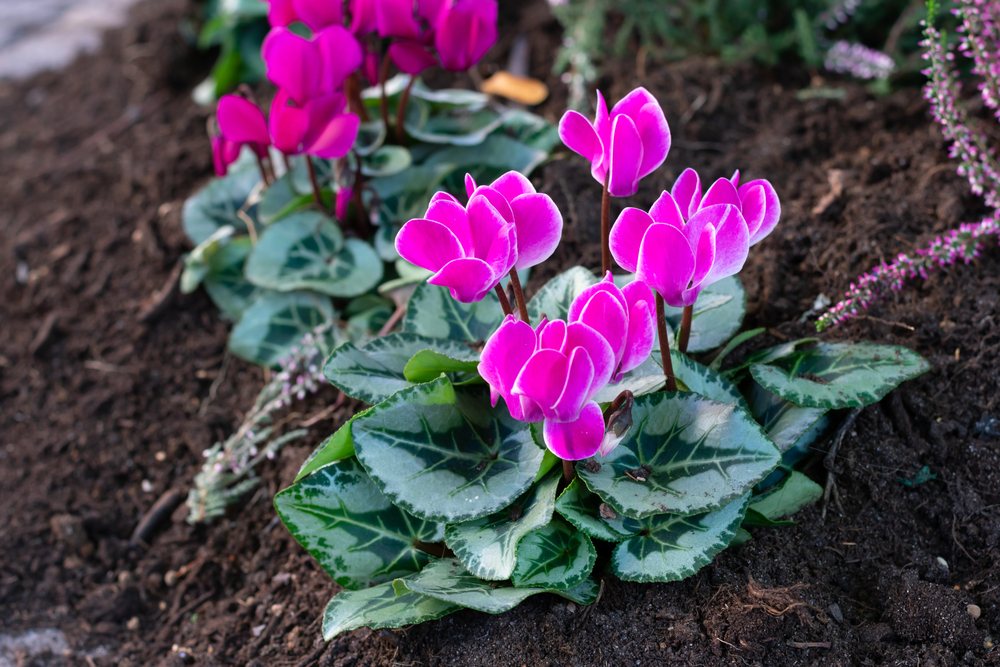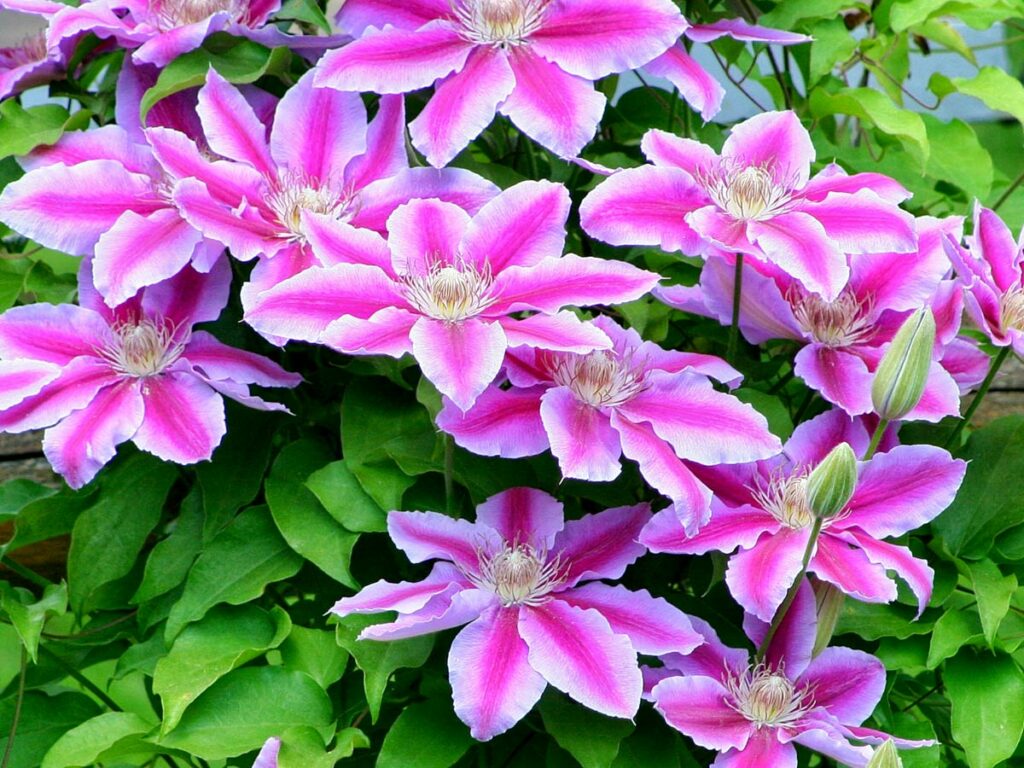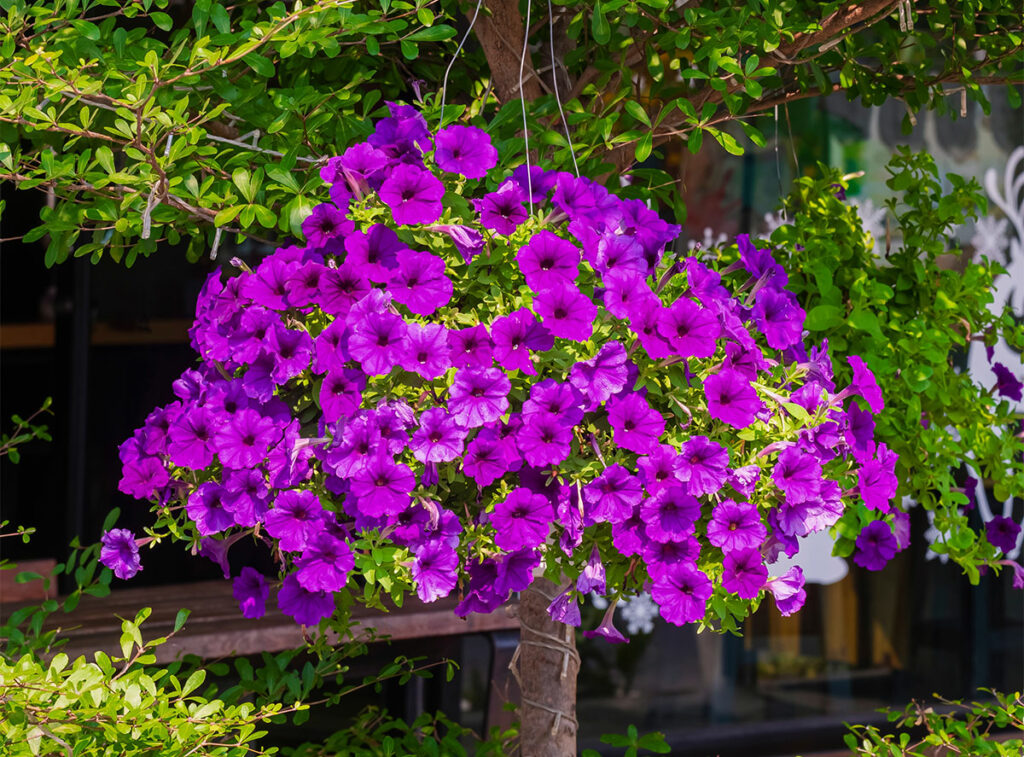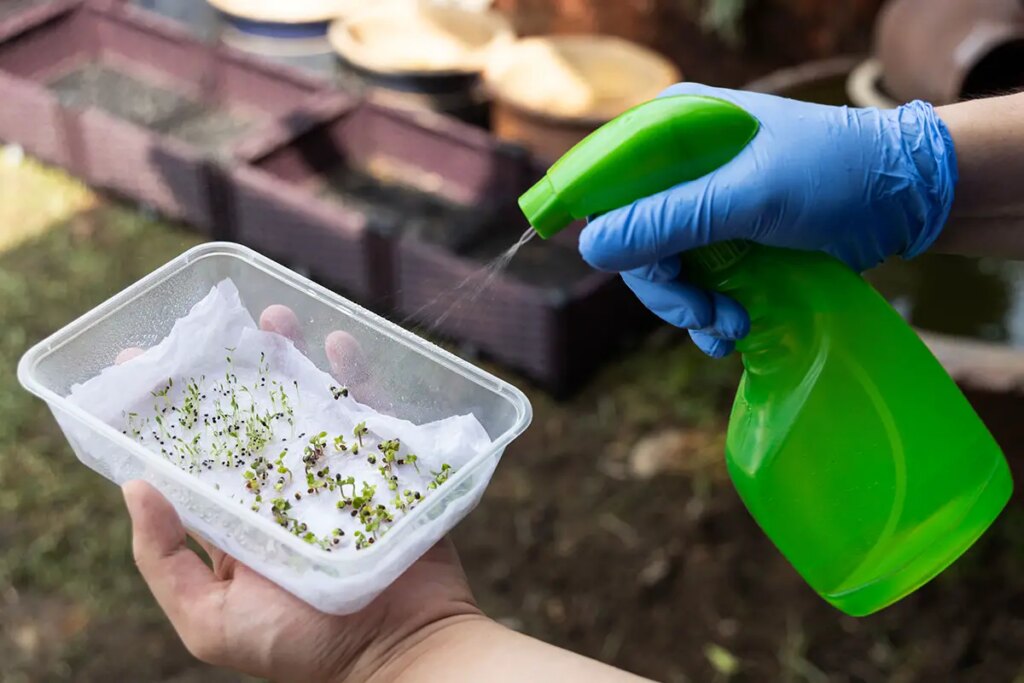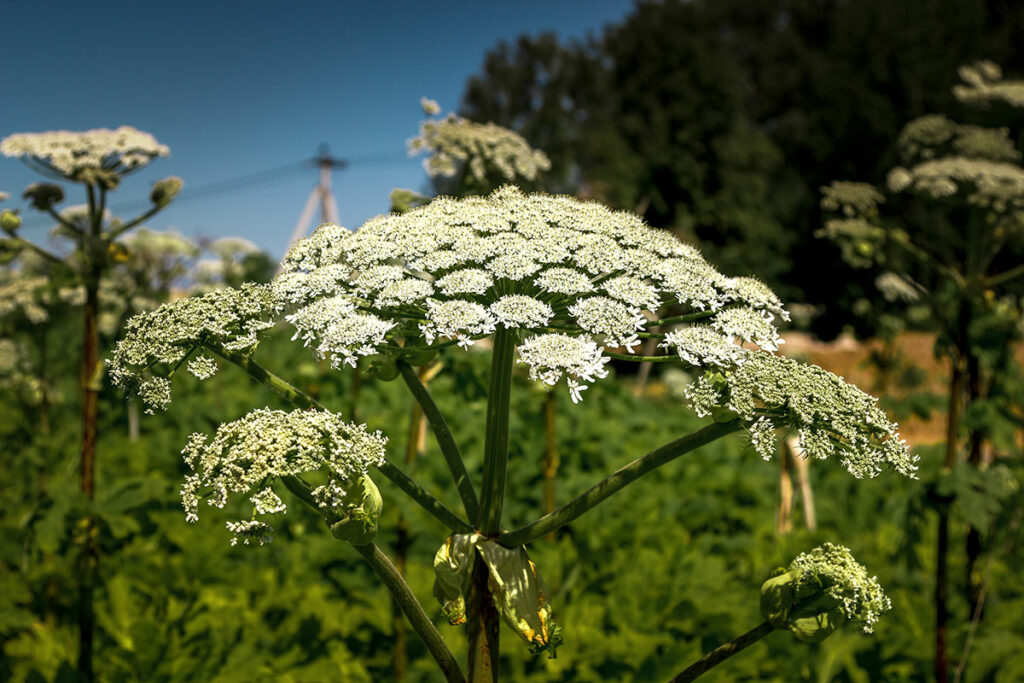
Giant hogweed, a towering and invasive plant species, can pose a threat to your garden and personal safety due to its toxic sap. As a responsible gardener or property owner, it’s crucial for you to understand how to effectively deal with this troublesome plant.
In this article, we’ll provide you with several practical tips for removing and preventing the growth of giant hogweed on your property.
The first step in tackling giant hogweed is identification. Being able to recognize this plant is essential for its safe and effective removal.
With large, umbrella-like white flower clusters, jagged leaves, and a thick, hairy stem, giant hogweed is typically easy to spot.
Apart from being a nuisance in your garden, it can also lead to serious skin irritation and burns upon contact, making the plant even more of a menace.
To rid your garden of giant hogweed, you’ll need to exercise patience and persistence. Following the tips provided in this article will ultimately enable you to eliminate this invasive species and create a safer, more enjoyable outdoor space for you and your loved ones.
Remember that safety should be your top priority when handling these plants to avoid any adverse health effects.
Identifying Giant Hogweed
Physical Characteristics
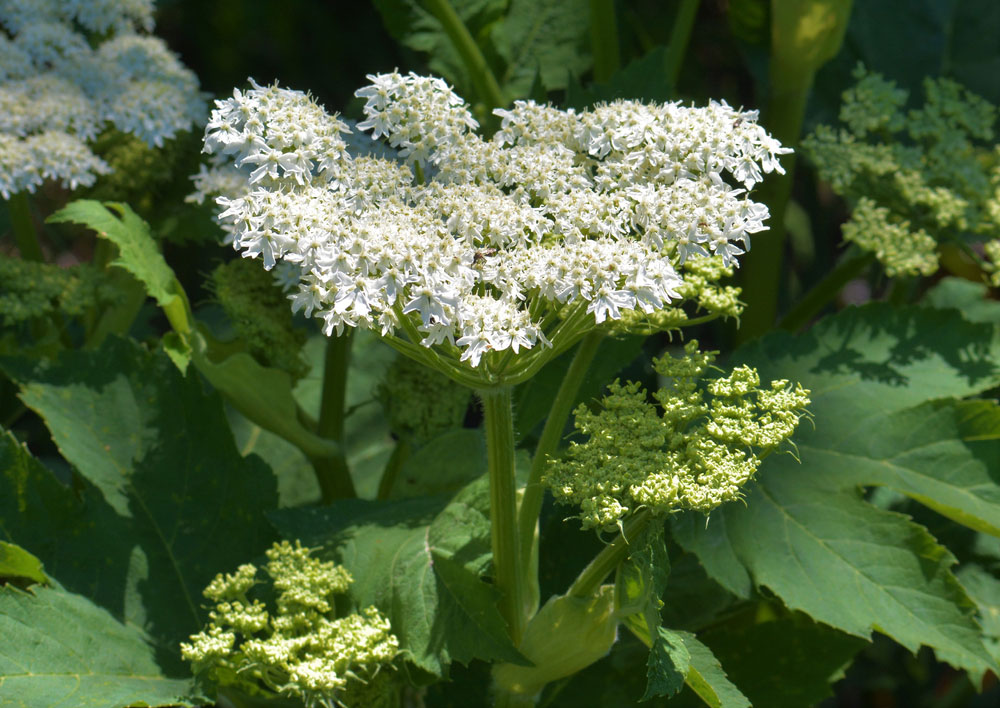
Giant Hogweed (Heracleum mantegazzianum) can be easily recognized by its striking appearance. Here are some key features to look out for:
- Towering height: They typically grow to 10-15 feet tall.
- White flowers: They form umbrella-like clusters called umbels, spanning 2-2.5 feet across.
- Large, lobed leaves: Their leaves can grow up to 5 feet across and have a deeply incised, jagged appearance.
- Thick, hollow stems: They have green stems with purple blotches and coarse white hairs. The stems can reach 2-4 inches in diameter.
Remember, wearing protective clothing and gloves is crucial when handling Giant Hogweed due to its toxic sap.
Habitats
Giant Hogweed can be found in the following environments:
- Riverbanks and streams
- Roadsides
- Vacant lots
- Woodlands and forest edges
- Disturbed habitats, such as construction sites
By being aware of Giant Hogweed’s preferred habitats, you can better identify and avoid encountering this dangerous plant. Stay vigilant and protect yourself from its harmful effects.
Safety Precautions
When dealing with Giant Hogweed, it’s essential to prioritize your safety.
In this section, we will cover the necessary personal protective equipment and warning signs.
Personal Protective Equipment
To protect yourself from Giant Hogweed, you must wear the following personal protective equipment:
- Long-sleeved shirts and pants: Covering your skin will help prevent the sap from coming into contact with your skin.
- Gloves: Choose thick, puncture-resistant gloves to protect your hands.
- Eye protection: Safety goggles or glasses are crucial to prevent sap from entering your eyes.
- Boots: Closed-toe, waterproof boots will help protect your feet and prevent your shoes from absorbing the sap.
Remember to wash your clothes and gear thoroughly after handling Giant Hogweed to remove any sap residue.
Warning Signs
Giant Hogweed can cause severe skin burns and even blindness if not handled with caution. Pay attention to these warning signs while working with this invasive plant:
- Skin irritation: If you notice your skin becoming red or irritated after contact with the plant, wash the area immediately and seek medical advice.
- Swelling or blisters: These can be signs of a severe reaction to the sap. Seek medical attention if you experience these symptoms.
- Eye discomfort: If you accidentally get sap in your eyes, rinse them with clean water and seek medical help as soon as possible.
By following these safety precautions and being mindful of the potential dangers, you can effectively and safely work to get rid of Giant Hogweed.
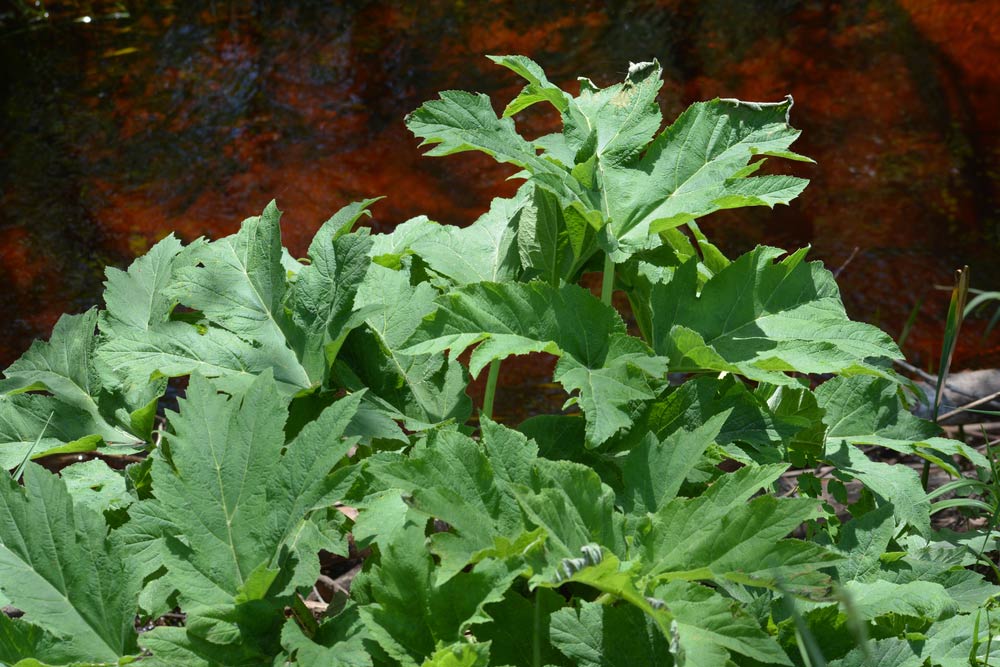
Mechanical Control Methods
Cutting
When it comes to controlling giant hogweed, cutting is a relatively quick and easy method. Get a pair of sturdy gloves to protect your skin from the plant’s toxic sap and a sharp tool like shears or a pruning saw. Cut the stems as close to the ground as possible while avoiding contact with the sap. Dispose of the cut plant material in sealed bags, since even dead plants can still be harmful. Keep in mind that cutting alone won’t kill the plant – it will likely regrow – so you should combine cutting with other methods like digging or tarping.
Digging and Extraction
Digging and extraction can be a more effective method to eliminate giant hogweed. The goal is to remove the entire root system to prevent regrowth. Start by digging around the base of the plant, using a spade or garden fork. Gently loosen the soil and extract the roots, ensuring you’ve removed all parts. Dispose of the extracted plant material in sealed bags, and remember to wear gloves to protect your skin.
Tarping
To control giant hogweed with tarping, you can use a black or opaque tarp. This method involves covering the area where the plant is growing to block out sunlight and effectively starve the plant.
Start by cutting the plant down as close to the ground as possible. Then, spread the tarp over the area, making sure to cover the entire plant and the surrounding soil to prevent regrowth. Secure the tarp with stakes or rocks to keep it in place.
Tarping can take a few months to a year to work, so you’ll need some patience – but it’s a safe and effective method for controlling giant hogweed populations.
Chemical Control Methods
Herbicides
When dealing with Giant Hogweed, it’s essential to use effective herbicides. Here are some options to consider:
- Glyphosate: Glyphosate is a non-selective herbicide that can effectively eliminate Giant Hogweed. Apply it carefully to avoid harming other plants.
- Triclopyr: Another good option, Triclopyr is a selective herbicide that only targets broadleaf plants, making it a more suitable choice for preserving grasses and other non-target vegetation.
Remember to always follow the label instructions and wear protective gear while handling these herbicides.
Application Techniques
Now that you know which herbicides to use, let’s discuss some application techniques:
- Foliar spraying: Use a handheld sprayer to apply the herbicide directly onto the Giant Hogweed leaves. This method makes it easy for you to control the chemical’s distribution, helping to protect the surrounding plants.
- Stem injection: If you want to target the plant more directly, injecting the herbicide into the stem can be an effective solution. Use a specialized stem injection tool to avoid herbicide spillage and ensure the chemical reaches the plant’s vascular system.
Whichever method you choose, be sure to apply the herbicide during the plant’s active growing season, typically from spring until early fall. This will maximize its effectiveness in getting rid of Giant Hogweed.
Please note that chemical control methods should be used as a last resort.
Disposing of Giant Hogweed Remains
Seeds
To dispose of Giant Hogweed seeds, you should first collect them using gloves to protect your skin from the toxic sap. Place the seeds in a sealable plastic bag to prevent contact with skin and to avoid any accidental spreading.
Dispose of the bag in the regular household trash. It’s crucial to remember that touching Giant Hogweed seeds can cause severe skin reactions, so always wear protective gloves while handling them.
Plant Material
When it comes to disposing of Giant Hogweed plant material, it’s essential to be thorough and cautious. Start by cutting the plant down, while wearing protective gear to shield yourself from the toxic sap. Next, you will want to:
- Place the cut plant material into thick plastic bags, ensuring no sap can leak out. Double-bagging is recommended.
- Seal the bags tightly to prevent any accidental leaks or exposure.
- Dispose of the bagged plant material in the regular household waste.
Breaking down the Giant Hogweed plant material will make it easier to handle, but never attempt to compost or mulch it as this could spread the toxic sap further. By following these steps and staying vigilant, you will effectively get rid of Giant Hogweed on your property.

